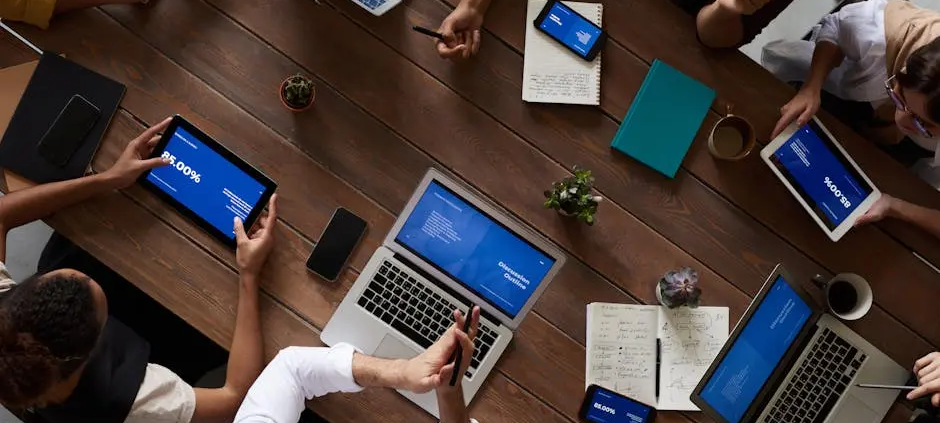Why Is User Acquisition Crucial for Startups and Entrepreneurs?
User acquisition is a fundamental aspect for the growth and success of startups and entrepreneurs. In this FAQ, we’ll explore why user acquisition is so crucial, providing clear and easy-to-understand answers to common questions.
What is User Acquisition?
User acquisition involves strategies and techniques used to attract new users to a product or service. It’s the process of persuading potential users to download or sign up, ultimately becoming loyal customers. This can involve various methods such as digital marketing, promotions, search engine optimization, and social media campaigns. Essentially, it’s all about reaching out to potential users and convincing them that your product or service meets their needs.
Additionally, user acquisition doesn’t just stop at getting people through the door. It’s also about ensuring that these users have a positive experience and are motivated to continue using the product or service. This often involves continuous engagement through personalized content, user-friendly interfaces, and excellent customer support.
Successful user acquisition requires a deep understanding of the target audience. This involves knowing their preferences, behaviors, and pain points, which can then be leveraged to create more targeted and effective marketing campaigns. Data analytics and user feedback play a crucial role in this process, helping businesses to constantly refine and improve their strategies.
Why Is It Important for Startups?
For startups, gaining new users is vital as it directly impacts growth and revenue. Without a steady influx of users, a startup may struggle to achieve profitability, secure funding, or scale its operations. User acquisition helps validate the market need for the product or service and provides the necessary traction to attract investors.
Moreover, the feedback from initial users can be invaluable in refining the product or service. Early adopters often provide insights that can lead to crucial improvements, helping startups to better meet the needs of their target market. This iterative process not only enhances the product but also builds trust and loyalty among users.
In the competitive landscape of startups, user acquisition also helps in building brand recognition and establishing a market presence. As more users begin to use and talk about the product, it naturally leads to increased visibility and credibility. This, in turn, can lead to organic growth through word-of-mouth referrals and positive reviews.
Further, securing a solid user base early on can create a network effect, where the value of the product increases as more people use it. This can be particularly powerful in the context of technology and social platforms, where user engagement and interaction drive continued growth and success.
How Does User Acquisition Drive Growth?
Effective user acquisition strategies help businesses expand their user base, thereby increasing their market presence and potential revenue. More users often lead to more engagement, feedback, and opportunities for improvement. For example, by understanding user behavior and preferences, businesses can tailor their offerings to better meet customer needs, which can boost satisfaction and retention.
Additionally, a growing user base can attract further investment, providing the necessary capital to expand operations, develop new features, and enter new markets. Investors typically look for startups with a strong user acquisition track record, as it indicates a viable product with a significant market demand.
Furthermore, a larger user base can open up new revenue streams. For instance, businesses might be able to offer premium features, advertising opportunities, or partnerships with other companies. Each new user represents not just potential revenue but also valuable data that can inform business strategy and product development.
In addition to direct financial benefits, a robust user acquisition strategy helps build a community around the product. Engaged users can become brand ambassadors, advocating for the product and contributing to a positive brand image. This community-driven growth can be more sustainable and cost-effective compared to traditional advertising.
What Are Common Strategies for User Acquisition?
Some common strategies include social media marketing, search engine optimization (SEO), content marketing, referral programs, and advertising. Each method aims to reach potential users and convert them into active customers. For instance, social media platforms like Facebook, Instagram, and LinkedIn allow businesses to target specific demographics with tailored ads.
SEO is another crucial strategy, helping businesses improve their visibility on search engines like Google. By optimizing website content for relevant keywords, companies can attract organic traffic that is already interested in their product or service. Content marketing, which involves creating valuable content such as blog posts, videos, and eBooks, also plays a significant role in attracting and engaging potential users.
Referral programs leverage existing users to attract new ones by offering incentives for successful referrals. This method not only helps in user acquisition but also enhances user engagement and loyalty. Paid advertising, on platforms like Google Ads, can deliver immediate results by placing the product in front of a broader audience.
In addition to these, advanced tactics like influencer marketing and partnerships can also be very effective. Partnering with influencers who resonate with your target audience can drive significant traffic and conversions. Collaborating with complementary businesses can also help in tapping into new customer bases.
Finally, utilizing data-driven approaches to track and measure the effectiveness of these strategies is essential. Analytics tools can provide insights into which methods are working best and where there might be opportunities for improvement. This continuous optimization ensures that user acquisition efforts remain efficient and effective over time.
How Does It Impact Brand Awareness?
User acquisition efforts can significantly boost brand awareness. As more users interact with a product or service, they are likely to share their experiences, leading to word-of-mouth promotion and increased visibility. This organic growth can be particularly powerful, as personal recommendations often carry more weight than traditional advertising.
Moreover, certain user acquisition strategies, such as social media marketing and content marketing, are inherently designed to increase brand awareness. Regularly posting engaging and relevant content can keep the brand top-of-mind for users, even if they are not yet ready to make a purchase. Over time, this consistent exposure can build trust and familiarity, which are crucial elements of brand loyalty.
In addition, participating in industry events, webinars, and online communities can help in establishing the brand as an authority in its field. These platforms not only provide opportunities for user acquisition but also enable direct engagement with the audience, further enhancing brand recognition and credibility.
Leveraging influencer marketing can also be a game-changer for brand awareness. Influencers with large followings can introduce the brand to new audiences, often in a more authentic and relatable manner. This kind of exposure can significantly boost brand visibility and attract new users who might have otherwise been unaware of the product.
Why Is Feedback from New Users Valuable?
Feedback from newly acquired users provides insights into user experience, satisfaction, and areas needing improvement. This information is crucial for refining products or services to better meet user needs and preferences. Early feedback allows startups to address any issues before they become widespread, ensuring a more positive experience for future users.
Additionally, new users often bring fresh perspectives that existing users might not provide. They can identify usability issues, suggest new features, and provide a different viewpoint on the product’s value proposition. Incorporating this feedback can lead to significant improvements and innovations that might not have been considered otherwise.
Collecting and acting on user feedback also demonstrates to users that their opinions are valued. This can enhance user loyalty and engagement, as people are more likely to continue using a product when they feel their input has a tangible impact. Moreover, satisfied users are more likely to become brand advocates, further aiding in user acquisition and retention.
Moreover, feedback mechanisms can be integrated into the user experience itself. For example, in-app surveys, feedback forms, and direct communication channels like chat and email can make it easy for users to share their thoughts. Analyzing this data can provide actionable insights that drive continuous improvement and innovation.
Final Thoughts
In summary, user acquisition plays a pivotal role in the success of startups and entrepreneurs by driving growth, generating revenue, building brand awareness, and providing valuable feedback. Understanding and prioritizing user acquisition can set the foundation for long-term success and sustainability.






Leave a Reply
Want to join the discussion?Feel free to contribute!